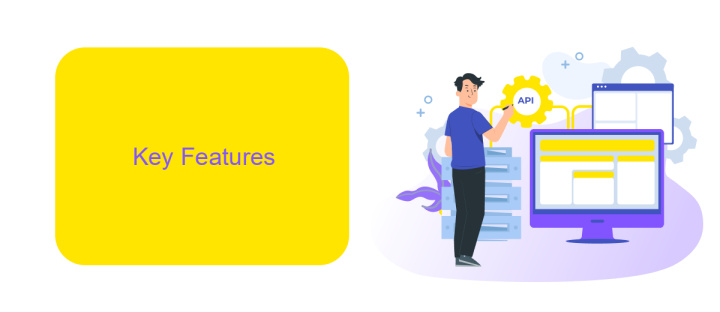Kubernetes Vs MuleSoft
In the rapidly evolving landscape of cloud computing and enterprise integration, Kubernetes and MuleSoft have emerged as pivotal technologies. Kubernetes excels in container orchestration, automating deployment, scaling, and operations of application containers. Meanwhile, MuleSoft specializes in API-led connectivity, enabling seamless integration of disparate systems. This article delves into the strengths and use cases of each, helping you determine which solution best fits your organizational needs.
Overview
Kubernetes and MuleSoft serve different purposes in the tech ecosystem, yet both are essential for modern enterprises. Kubernetes is an open-source platform designed for automating the deployment, scaling, and management of containerized applications. On the other hand, MuleSoft provides an integration platform for connecting applications, data, and devices, enabling seamless communication between disparate systems.
- Kubernetes: Focuses on container orchestration and management.
- MuleSoft: Specializes in API-led connectivity and integration.
- ApiX-Drive: A tool that facilitates easy integration between various services and applications.
While Kubernetes excels in managing complex application deployments and ensuring high availability, MuleSoft simplifies the integration process, making it easier to connect different systems and data sources. Tools like ApiX-Drive further enhance the integration capabilities, offering a user-friendly interface to automate workflows and data transfers between applications. Together, these technologies provide a robust foundation for building scalable, interconnected systems.
Key Features

Kubernetes is renowned for its robust container orchestration capabilities, allowing developers to efficiently manage and scale containerized applications. Key features include automated deployment, scaling, and operations of application containers across clusters of hosts. Kubernetes also offers self-healing mechanisms, load balancing, and secret management to ensure high availability and security. Additionally, it provides a flexible framework for microservices architecture, facilitating seamless integration and continuous delivery pipelines.
MuleSoft, on the other hand, excels in enabling seamless integration across various systems, applications, and data sources. Its Anypoint Platform is equipped with tools for designing, deploying, and managing APIs, making it an ideal choice for complex integration scenarios. MuleSoft supports a wide range of connectors and pre-built integration templates, which significantly reduce development time. For businesses looking to streamline their integration processes, services like ApiX-Drive can complement MuleSoft by providing additional automation and connectivity options, further enhancing the overall integration strategy.
Benefits

When comparing Kubernetes and MuleSoft, each platform offers distinct benefits tailored to different needs. Kubernetes excels in orchestrating containerized applications, ensuring scalability, and managing complex microservices architectures. MuleSoft, on the other hand, is a robust integration platform that simplifies connecting various applications, data sources, and APIs.
- Scalability: Kubernetes provides automatic scaling of applications based on demand, ensuring optimal resource utilization.
- Flexibility: MuleSoft's Anypoint Platform allows seamless integration with a wide range of systems, enhancing business agility.
- Cost Efficiency: Kubernetes reduces infrastructure costs by efficiently managing resources, while MuleSoft minimizes integration costs by streamlining connectivity.
- Reliability: Kubernetes ensures high availability and fault tolerance for applications, whereas MuleSoft offers robust data integration and API management capabilities.
- Ease of Use: Tools like ApiX-Drive can complement MuleSoft by automating integrations, making it easier to connect various services without extensive coding.
Ultimately, the choice between Kubernetes and MuleSoft depends on the specific requirements of your project. Kubernetes is ideal for managing containerized applications and microservices, while MuleSoft excels in simplifying complex integrations and API management. By leveraging tools like ApiX-Drive, businesses can further enhance their integration processes, ensuring seamless connectivity and operational efficiency.
Use Cases

Kubernetes and MuleSoft serve different purposes and cater to distinct use cases. Kubernetes is primarily used for container orchestration, allowing organizations to efficiently manage, scale, and deploy containerized applications. It is ideal for microservices architecture, ensuring high availability and seamless scaling of applications.
On the other hand, MuleSoft focuses on integration, enabling businesses to connect various applications, data, and devices. It provides a robust platform for building application networks through APIs, making it easier to integrate disparate systems and streamline workflows.
- Managing and scaling microservices applications with Kubernetes.
- Orchestrating containerized applications across multiple environments.
- Integrating diverse systems and applications using MuleSoft.
- Building API-driven architectures to facilitate seamless data flow.
For organizations looking to automate and simplify their integration processes, tools like ApiX-Drive can complement MuleSoft by providing easy-to-use interfaces for connecting various services. While Kubernetes excels in managing application deployment, MuleSoft and ApiX-Drive ensure that all systems within the enterprise communicate effectively, enhancing overall operational efficiency.
Conclusion
In conclusion, both Kubernetes and MuleSoft offer powerful solutions for managing and integrating applications, but they serve different purposes. Kubernetes excels in orchestrating containerized applications, providing scalability, and ensuring high availability. On the other hand, MuleSoft specializes in API management and integration, enabling seamless connectivity between disparate systems and services. Choosing between the two depends largely on your specific needs and objectives.
For organizations looking to streamline their integration processes, leveraging tools like ApiX-Drive can further enhance operational efficiency. ApiX-Drive simplifies the setup of integrations, making it easier to connect various applications and services without extensive coding. Ultimately, understanding the unique strengths of Kubernetes and MuleSoft, along with complementary tools like ApiX-Drive, will enable businesses to build robust, scalable, and integrated solutions tailored to their requirements.
FAQ
What is the primary difference between Kubernetes and MuleSoft?
Can Kubernetes and MuleSoft be used together?
Which platform is better for API management?
Is Kubernetes suitable for enterprise integration?
How can I automate integrations and workflows between Kubernetes and other services?
Apix-Drive will help optimize business processes, save you from a lot of routine tasks and unnecessary costs for automation, attracting additional specialists. Try setting up a free test connection with ApiX-Drive and see for yourself. Now you have to think about where to invest the freed time and money!

